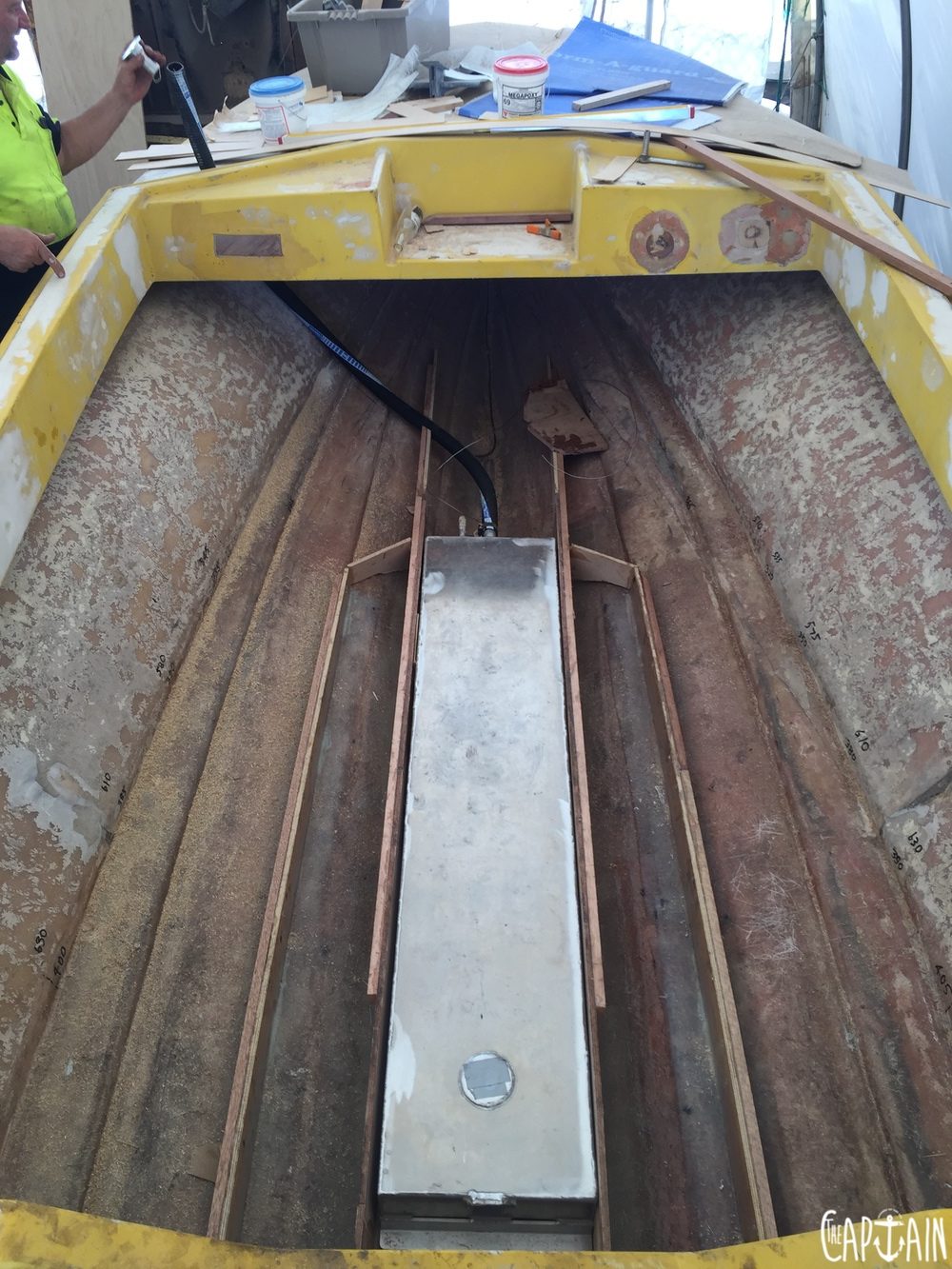Lack of experience or budget didn’t slow the Palumbo brothers down. After three years, their Invader is finally finished and the boys are already ankle-deep in fish blood and cray legs.
How’s life on the WA coast?
We’re only 5km from the coast and it’s a short trip to Garden, Carnac and Rottnest islands. Just over two hours away, there are awesome fishing towns such as Jurien Bay and Cervantes.
Talk about your tackle.
We love diving, so crays and demersal species (groundfish) are always on the menu. Our biggest cray, so far, is 2.5kg. As far as undersea weaponry goes, we use Rob Allen Tuna spearguns — 1100 and 1200 — and Odysseus cray loops. We do a lot of jigging in 30m-50m of water, and at dawn and dusk we hit up the inshore reefs. Our go-to combo would be a Saltiga 4000 with a 6’8” Grappler. It does it all — including a couple of 30lb dhufish in one weekend at Leeman.
AT A GLANCE
Boat: Caribbean
Model: Invader 520
Owners: Josh (left) and Zac Palumbo
Occupations: Ex-student/ Bunnings workie and rigger
Live: Munster, Western Australia
Tell us about your beastie rebuild.
She’s a Caribbean Invader 520. We didn’t know too much about the boat when we got her off Gumtree for $1300. She didn’t have a model name, HIN number or WA rego. But she did have nice lines and we wanted a runabout-style boat that was also seaworthy.
SPACE INVADER
The Invader had fully rotten stringers and a soft transom. The boys ended up with a shell and trailer — and a big rebuild ahead, starting with new stringers and a 95L fuel tank.
THE BUILD
1. The dash panel was extended all the way to the floor.
2. Strong and simple, the new rig starts to take shape.
3. Removing the rotten transom.
4. The floor was replaced with 18mm marine ply.
5. Side pockets run full length for fins and spearguns.
Risky move — did it pay off?
Not initially. We discovered the boat had fully rotten stringers and a soft transom. It essentially left us with a shell and trailer — and a big rebuild ahead. We started with a new stringer pattern and floor, adding bulkheads up the front. We did it the old-school way, using a combination of 12/18mm marine ply and polyester resin, two-pack paint straight off the gun and flowcoat, brushed and rolled on. While we were at it, we modified the dash panel for flush-mounted instruments and displays, and extended it to the floor. We fitted an anchor well, side pockets and a 95L underfloor fuel tank to maximise our deck space. After that, she started to look like a boat!
That’s a bloody big job — how long were you on the tools?
It took more than three years, all up. We spent six months sanding and stripping her, then another year rebuilding the transom and stringers, working one to two days a week. So, about a year and a half of actual work.
Now she’s on the water, was it all worth it?
Absolutely. The ride is soft and dry, and the hull is stable in most conditions. She’s small enough to manage easily — even beach launch — but big enough to head offshore with the big boys. We’ve taken her 24nm offshore. We’re super stoked with the old-school looks combined with a modern refit.
Describe her in five words.
Old-school, unique, reliable, soft and versatile.
What other gear are you running?
A Lowrance Elite Ti9 with TM150 transducer, Fusion stereo system and dual batteries. There’s a 1500 GPH bilge below deck and 360 GPH above to keep the deck dry. We also fitted custom stainless grab rails and swim platforms that complement the style of the boat.
Let’s talk dollars and cents. Hopefully your girlfriend isn’t reading this.
With motor, she owes us around $35,000. We spent between $6000 and $8000 on fibreglassing and materials, but saved some coin using Dad’s sandblaster and spray painter — he restores old cars. Then it cost $1500 to get the trailer up to scratch (new bearings, tyres, axles, rollers, checker plate guards). Throw in another $5000 on the fit-out, plus more for the fuel tank, a new windscreen… and then we needed a new motor.
Tell us about the donk.
The old 115HP E-TEC clearly had a lifetime of abuse. So we upgraded to a 2019 Suzuki DF140 running a 19-inch prop. It pushes the boat to 38 knots, but can cruise on 25 knots at 4000RPM.
Any tips for first-time builders?
Have a go. We had no prior experience, but learned along the way with a bit of help from a local shipwright. Approach your project with a plan of how you want it to look and research as many other boats as you can for inspiration. And prep is everything. We primed and sanded the hull three times before painting. It was hard work, but it paid off in the end. Be prepared to get itchy. Now that we’ve done one, we’ll definitely do another, bigger, boat.
SOME CHOICE TIPS
1. Good storage with drainage and a bloody strong handrail.
2. The boys gave the trailer a $1500 overhaul.
3. The DF140 Suzuki pushes the Invader to 38 knots.
4. This tale had a happy ending.
The Captain salutes you, boys. Chatting with you brought back good memories of the old Nub Tub – and a few nightmares!



















Recent Comments